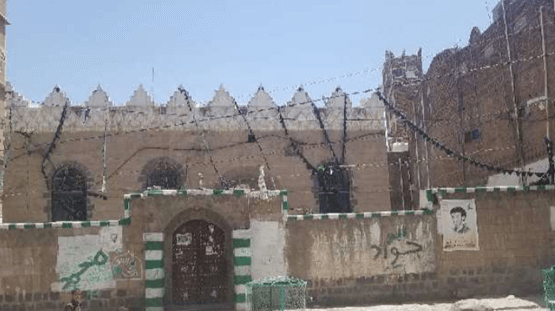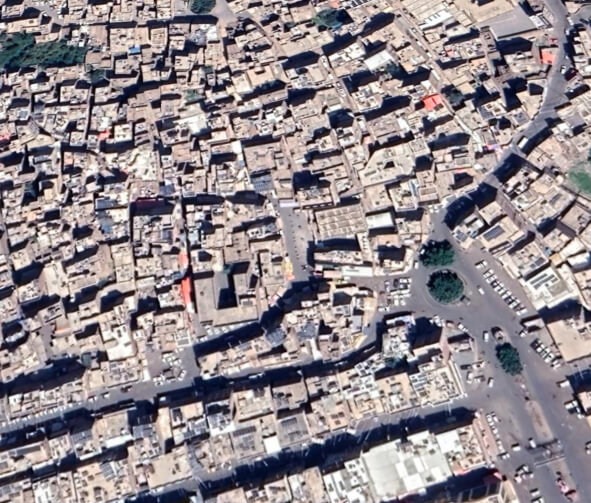
Nusayr Mosque – Old Ṣan‘ā’
مسجد نصير- صنعاء القديم ة
Monument description
The monument was built by Naseer bin Musa. Musa is Musa bin Al-Makeen, who built the Musa Mosque. Al-Hajari mentioned that the Mosque was built on the southeastern side, high in the city of Sana‘a, following the old architecture of the 9th century AH / 15th century CE. The period of the establishment of this Mosque goes back to the period of the Bani Barsol era, a prosperous era for the construction of Mosques and Schools throughout Yemen, whether by Sultans or Princes and leaders who were subordinate to them, or by the women of Bani Rasul. If Naseer is really the son of Musa bin Makin, then his father’s nickname appears as ‘Maken’, whose leader may have been one of the leaders of Bani Ayyub who preferred to stay in Yemen. His building was renewed by Imam Al-Mansur Billah Al-Hussein bin Al-Mutawakkil Qasim bin Al-Hussein, son of the Imam Al-Mahdi Ahmed bin Al-Hassan bin Al-Imam Al-Qasim in the year 1161 AH. He died before the completion of the building, and his son Imam Al-Mahdi Abbas bin Al-Mansur Hussein completed it. However, the building was destroyed by Imam Al-Mansur Billah Al-Hussein bin Al-Qasim after the death of his father in the year 1139 AH / 1727 CE, and he continued in power until his death in the year 1161 AH / 1748 CE.
The construction of the Minaret of the Nusayr Mosque began in the year 1148 and was complete in the year 1160 AH.

Architectural and cultural value
Construction style and built date: The layout of the Mosque consists of a tiled Prayer Hall with a flat roof supported by the wooden beams resting directly on the capitals of stone columns and arches. This monument was built in the year 1359 AH.
Components of the Mosque: Prayer Hall, Ablution Units and traditional baths.
- Justifications for intervention:
- 1 – Neglecting the competent authorities in carrying out periodic restoration work due to the lack of budgets for the repairs.
2 – Preserving the monument from disappearance and stopping the damage caused to the monument from expanding.
3 – Restoration of the damage to the mosque resulting from the flight strikes of the southern part of the old city of Sana’a.
4 – Contribute to the restoration of damaged monuments in a proper manner in order to keep Old Sana’a In the World Heritage List.
- Monument conditions:
- The building was subjected to multiple renovations, additions and removals between 1996 and 2003, but it was exposed to moisture in more than one place and cracks.
- 1. The ceiling of the Prayer Hall shows vertical cracks from the inside
- 2. The Mihrab has damage due to moisture
- 3. The bricks in the lower walls of the Prayer Hall are damaged
- 4. Decomposition of some stone blocks as a result of salts.
- Treatment:
- – Restoration and re-layer Qudad in the affected areas. Re-dressing and making rainwater drainage on the northern façade
- – Restoration and re-layer Qudad in the affected areas. Re-dressing and making rainwater drainage on the northern façade
- – Reconstruct the dilapidated wall.
- – Repair the longitudinal cracks
- – Treating damaged foundations and solving the problem of moisture
- – Treating roofs and preventing rainwater intrusion.

Countries







